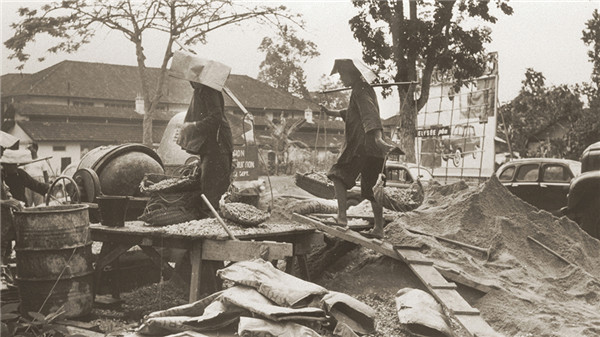 |
|
Samsui women, from the Chinese province of Guangdong, worked at the construction sites of Singapore and distinguished themselves through the red scarves they wore. [Provided to China Daily] |
Chinese women who left the mainland faced untold suffering.
The nineteenth and early twentieth century Chinese immigrants to Singapore deserve more than a few books for their remarkable tales of survival. Among them, there are two special groups whose experiences, although little known outside of Singapore, best embody the courage and grit of their generation.
One group is known as "mah-jie" in Cantonese, the dialect of the Chinese province of Guangdong (Canton).
The word means "mum-sister".
"It is mum because these women from Shunde, in Guangdong, were mostly domestic servants for rich local families, and in this role they helped raise the children in the family; and sister because they, before leaving for Singapore, took a vow of celibacy, often as a means to escape arranged marriages," says Sophie Soon, from the Chinese Heritage Center in Singapore.
In a sense, it was their spinsterhood that had brought them to this new land, according to the museum guide.
After taking the vow, these women were regarded as "independent" and therefore could no longer live at home with their families.
Left to fend for themselves, many of them worked in the silk industry for which Shunde was famous.
But when the industry began to decline in the 1930s, just before the Japanese invasion of China, many of them left for Southeast Asia, including Singapore.
They were joined there by the "Samsui women" - forming the larger picture of female migration from China.
Known also as "hong tou jin", Mandarin for "red headscarves", these women from the Samsui area of Guangdong province worked as laborers in the construction industry, an industry that was traditionally almost exclusively the preserve of men.
While the mah-jie donned white tops and black trousers, these Samsui women had their own unofficial uniform - red scarves and dark-blue or black outfits.
Chu Kin Fong, a local tour guide, says the color red served a purpose.
|
|
|
|
|
|
|
|
